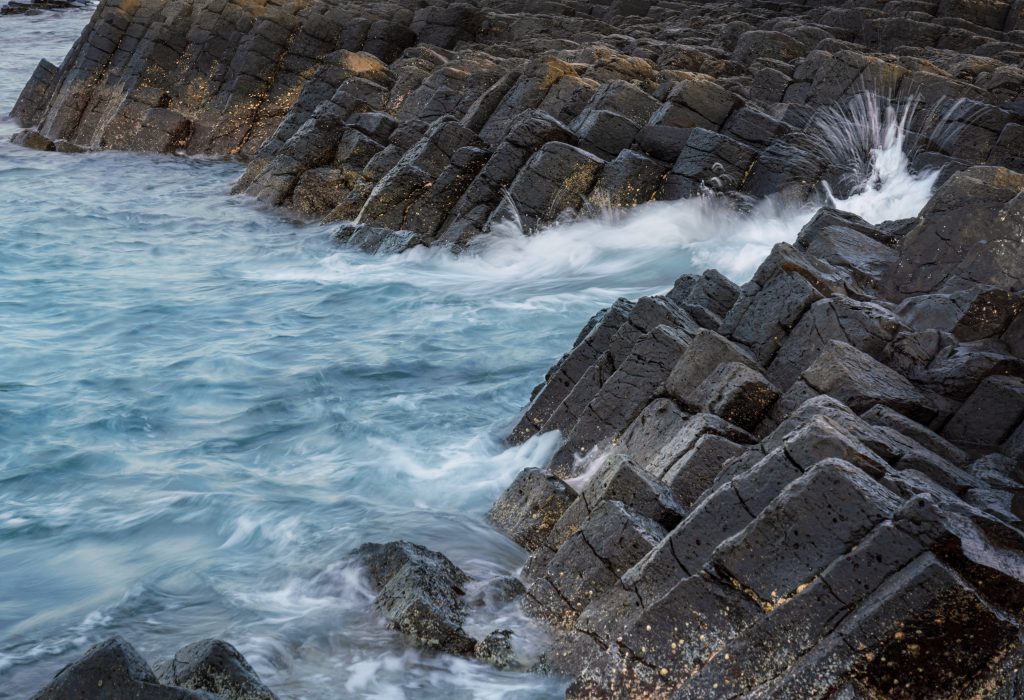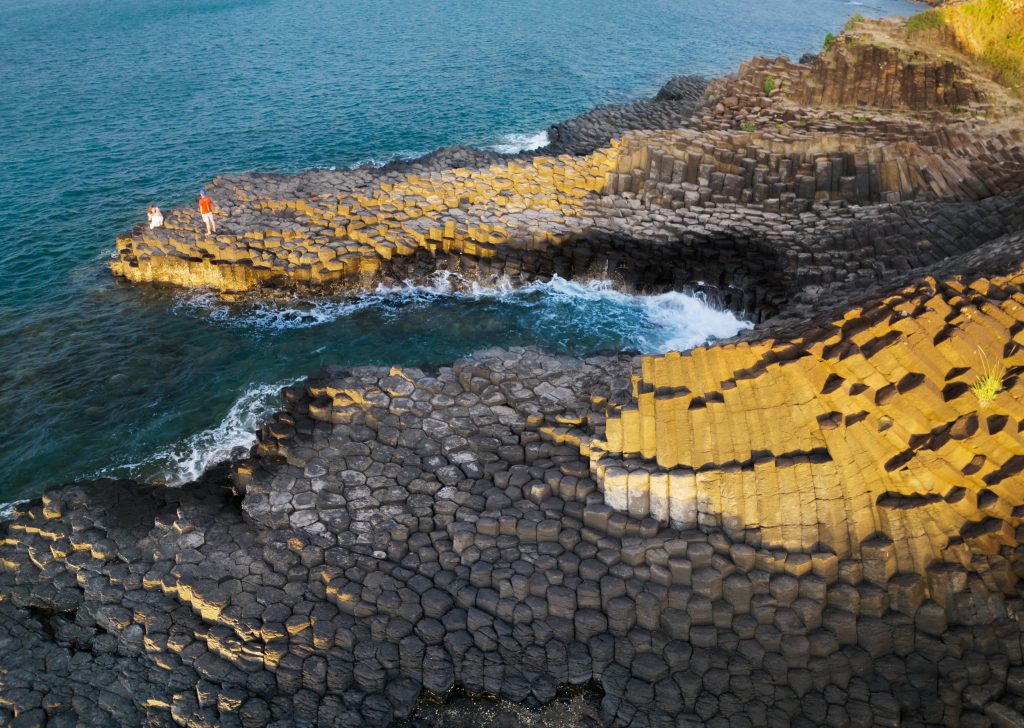Vinh Dav
As the west-southwesterly wind begins to blow throughout the Central Region, it clears the humid mists. The most beautiful season in the Central Region features bright dawns, clear skies, and blue seas. Early May to late August is the ideal time for a road trip to explore the coastal scenery along National Highway A1, which runs near and parallel to the shoreline from Thanh Hoa to Vung Tau. I chose a short route from Tuy Hoa in Phu Yen to Quy Nhon in Binh Dinh to visit various famous landmarks, especially Da Dia Reef in Tuy An District, Phu Yen. Located only 13 kilometers from National Highway 1A, this rock formation is among the most beautiful in the world.

According to experts, Da Dia Reef was formed from basalt rocks over 200 million years ago, when hot lava flows from volcanoes in central Phu Yen province suddenly met cold sea water and shrunk into solid rocks. They later broke apart in multiple directions, creating rocks of different shapes. These rocks are believed to represent the “intentional chaos” characteristics of nature.
Seen from a distance, these rocks sit at different heights, some high and some low, some bright and some dark, similar to statues in a sculpture garden. As I approached, the rocks seemed to stretch outward, like stacks of dishes, hence the name of Da Dia, which translates as “Rocky Cliff of Plates”. The bird’s eye views of a hand-operated drone revealed that the surfaces of these helix-shaped rocks line up evenly, as if held together by some mysterious black glue. Their beehive structure stands out against the blue backdrop of the sky.
Closing in, I could better observe the assorted shapes of flat and uneven rocks, as well as various formations of mostly straight columns, curvy blocks, and inclined rocks. Thousands of rocks with different shapes, including pyramids, quadrilaterals, hexagons, pentagons, and even cubes or spheres, are stacked together and tightly packed as an inseparable whole. Seeing them all together, it seems like they were meticulously assembled by the hands of a god. High columns of rocks are stacked toward the sea, while the ones near the sea’s surface lean toward the land, probably because the lava flows were met with ocean waves crashing in the opposite direction.

For travelers, the most striking and alluring part of Da Dia Reef is the sink at its center. As it sits lower, ocean waves crash against the rocks and break into white lines at high tide. Because of their constant contact with the waves, the surrounding rocks have become smooth and shiny but still cling together as if nothing can tear them apart.
The color changes throughout the day are another unique and attractive feature of Da Dia Reef. When the sun has yet to rise above the horizon, the faint light makes the rocks of different shapes seem even more mysterious. In this pitch-black space, the only sounds are those of the waves crashing against the crevices. As time goes by, the sun begins to rise over the horizon, shedding faint yellow light on the seaward rocks and making the wet columns glow. The most beautiful picture of nature begins to unfold. To the east, the horizon and the surface of the sea are painted with red and gold, while each wave hitting the rocky shore shines white. To the south, the sea’s surface is blue and the rocky reef is a deep contemplative shade of black. In the stark contrast between ceaseless movements and stillness, the brilliant light is interwoven with deep colors. It does not take long for the sun to rise overhead. The sea grows clear blue with small boats in the distance, and the sky is blue with patches of white clouds mirrored on the water’s surface. As the day comes to an end, the rocks put on a warm yellow color in the fading daylight. Each moment of the day offers different feelings to visitors.
In 2020, Da Dia Reef was recognized as a National Heritage Site by the Prime Minister. Da Dia Reef is waiting for you to experience its beauty yourself.










